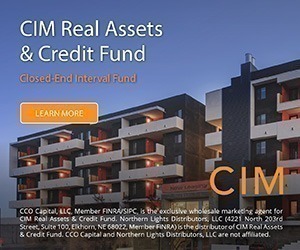REIT investors may have seen the term “capitalization rate” used in discussions of individual real estate property acquisitions and valuations and even in the broader market context when comparing investor expectations and property portfolio values. In this article we explain what capitalization rates or “cap rates” are and what they aren’t, and how nontraded REIT investors might interpret them. Investors expect both a return on their investment and a return of their investment. Both types of returns involve risk. Rational investors realize that higher expected returns involve more risk, which may mean less predictable returns or greater chance of loss. Total returns expected by stock investors usually include both dividend yields and capital gains. Since both types of return are closely related to the earnings of the company, one metric often applied to common stock is the earnings yield or Earnings/Price ratio (E/P), more commonly expressed as a P/E ratio. Analysts describe the return on bond investments as the yield to maturity, an average return which combines both interest income and return of principal if the bond does not default prior to its maturity date. Nontraded REIT investors also want to quantify their expected returns. They will be receiving a good portion of their returns on investment in the form of distributions, and one way to express that rate of return is by dividing the annual distributions by a price per share, which we term distribution yield. Again, just as in the case of stock or bond investments, the total expected return must also include the return of investment, which in the case of nontraded REITs can only be known and measured at the full-cycle event, when the nontraded REIT is sold, merged, liquidated or listed. Real estate investments produce income available to investors in the form of NOI, or Net Operating Income. This is the revenue generated by a property less all normal operating expenses, before depreciation, interest expense and capital expenditures. The value of a property at acquisition is sometimes described in terms of its “cap rate” to provide a reference or relative value to other similar transactions occurring in a similar timeframe. One method of estimating the market value of a REIT’s portfolio of properties is to “capitalize” the REIT’s NOI using a capitalization rate. The math is simple:
Just as in the case of stock or bond investments, this equation relates the value of the investment to the average return it is expected to produce. It is an inverse relationship. The lower the capitalization rate for a given level of NOI, the more valuable the property. Typically, the NOI used is either the last reported annual NOI or next year’s projected NOI. The total return a REIT investor earns will consist of annual distributions from NOI and the “terminal” value of the REIT’s shares at the full-cycle event. The value of a REIT’s property portfolio is not easily estimated, since market prices for their assets are not available without regular independent appraisals, but REITs do report NOI quarterly. A first approximation of the REIT’s portfolio value would be recently reported NOI capitalized using an appropriate market capitalization rate. A common misconception is that capitalization rates somehow equate to distribution yields. This is not the case. Just as E/P ratios are not the same as dividend yields for common stocks, capitalization rates are not the same as distribution yields for REIT shares. Neither metric captures the rate of return to be expected or realized at the end of the investment holding period.
The following table summarizes some common measures of returns for the three investment types:
| Investment Type |
Estimates of Current Return on Investment |
Return of Investment |
Total Return |
| Stocks | Earnings Yield or Dividend Yield |
Future Stock Price | Dividend Yield + Price Appreciation |
| Bonds | Interest Income | Face Value at Maturity | Yield to Maturity |
| REITs | Distribution Yield | Future Property Value = NOI/Cap Rate |
Distribution Yield + Property Appreciation |
Real estate appraisers recognize the inherent risk vs. return trade-off in real estate investments by using different “risk-adjusted” capitalization rates. The appropriate market cap rate to use for estimating portfolio values will depend upon many factors. Companies that estimate market cap rates by gathering data on commercial real estate transactions will report different average cap rates for different types of properties (office, apartments, industrial, retail, etc.) and different locations (region of the U.S., metropolitan area, urban vs. suburban). Also important are the class of property, age, occupancy rate and condition. For example, a newer apartment complex in a prime location in a growing urban market may have a capitalization rate 2.0% lower than an older property in a less desirable location in a slower-growing market. When applied to the same NOI, this cap rate spread could easily result in a 40% valuation difference between the two properties. Add to that the risks inherent with some commercial properties such as the financial health of anchor tenants, and the appropriate cap rate may vary considerably even between physically comparable properties. Several important cautions are in order. Just as in the case of stocks and their E/P ratios, assumptions about the future growth of earnings or NOI are crucial in estimating values. One question worth asking is how much of that NOI generated by the properties must be reinvested in the form of capital additions or paid out for such expenses as leasing commissions (“post-NOI expenses”). There are no guarantees that the operating income of a REIT will be available to pay shareholder distributions.











